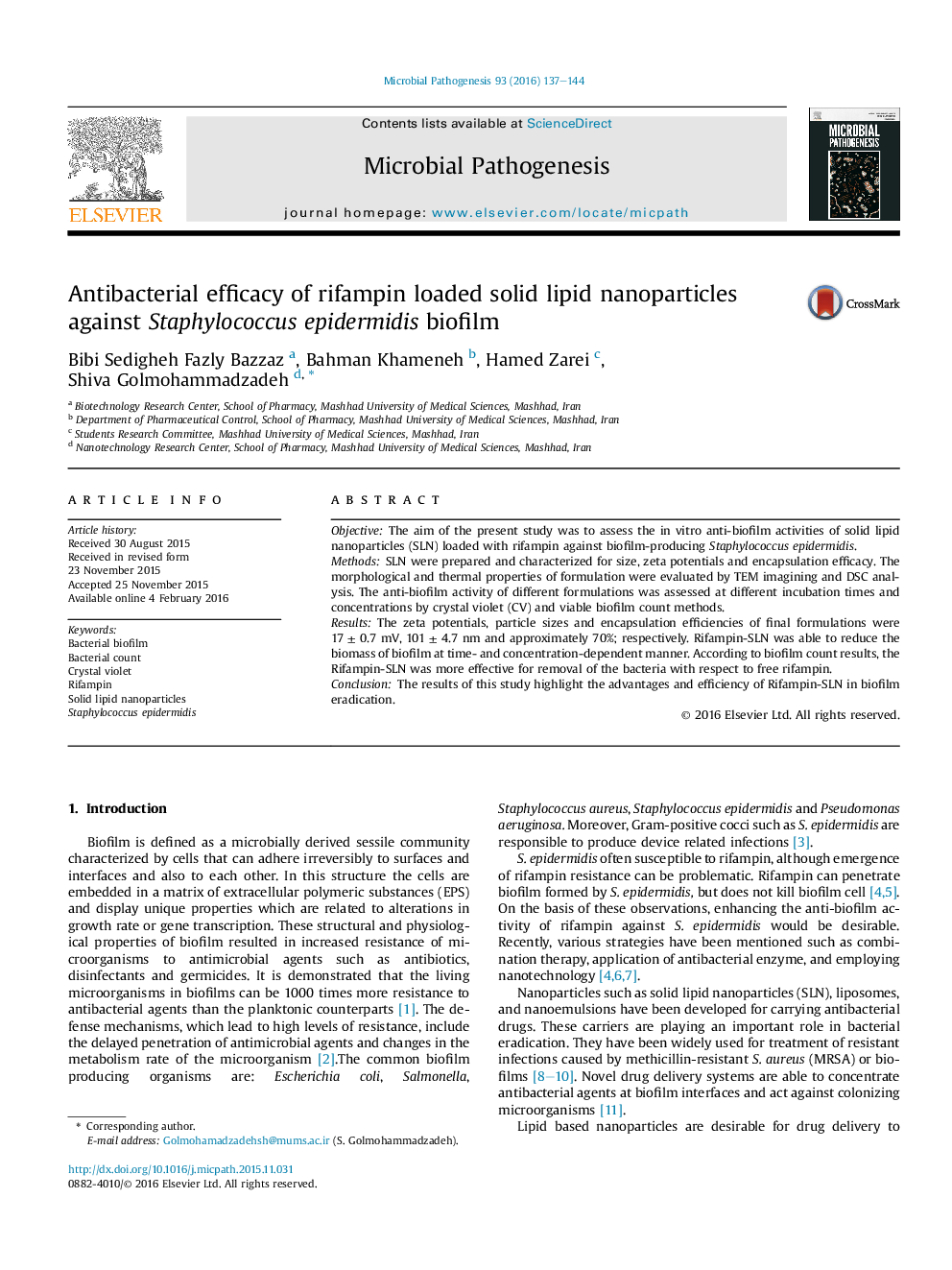| Article ID | Journal | Published Year | Pages | File Type |
|---|---|---|---|---|
| 3416321 | Microbial Pathogenesis | 2016 | 8 Pages |
•The final SLN formulations showed sufficient physicochemical properties and were able to deliver rifampin to biofilm.•Rifampin-SLN was more efficient in biofilm degradation and also killing bacteria in comparison with free rifampin.•The results highlighted the advantages and efficiency of SLN in biofilm eradication.
ObjectiveThe aim of the present study was to assess the in vitro anti-biofilm activities of solid lipid nanoparticles (SLN) loaded with rifampin against biofilm-producing Staphylococcus epidermidis.MethodsSLN were prepared and characterized for size, zeta potentials and encapsulation efficacy. The morphological and thermal properties of formulation were evaluated by TEM imagining and DSC analysis. The anti-biofilm activity of different formulations was assessed at different incubation times and concentrations by crystal violet (CV) and viable biofilm count methods.ResultsThe zeta potentials, particle sizes and encapsulation efficiencies of final formulations were 17 ± 0.7 mV, 101 ± 4.7 nm and approximately 70%; respectively. Rifampin-SLN was able to reduce the biomass of biofilm at time- and concentration-dependent manner. According to biofilm count results, the Rifampin-SLN was more effective for removal of the bacteria with respect to free rifampin.ConclusionThe results of this study highlight the advantages and efficiency of Rifampin-SLN in biofilm eradication.
